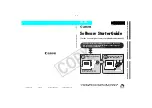
CHAPTER 17. INSTRUMENT, DRUM AND EFFECT RACKS
242
2
3
1
4
The Chain List in a Drum
Rack.
1. In addition to the standard selectors found on all Racks, Drum Racks have four
additional controls in the view column. From top to bottom, these are the Auto
Select button and toggles for the Input/Output, Send, and Return sections.
2.
Input/Output Section.
The Receive chooser sets the incoming MIDI note to which
the drum chain will respond. The list shows note names, MIDI note numbers and
standard GM drum equivalents. The Play slider sets the outgoing MIDI note that
will be sent to the devices in the chain. The Choke chooser allows you to set
a chain to one of sixteen
choke groups.
Any chains that are in the same choke
group will silence the others when triggered. This is useful for choking open
hihats by triggering closed ones, for example. If All Notes is selected in the
Receive chooser, the Play and Choke choosers are disabled
in this case, the
chain simply passes the note that it receives to its devices. The small Preview
button to the left of these choosers res a note into the chain, making it easy to
check your mappings away from a MIDI controller.
3.
Mixer Section.
In addition to the mixer and Hot-Swap controls found in other
Rack types, Drum Racks also have
send sliders.
These sliders allow you to set the
amount of post-fader signal sent from each drum chain to any of the available
return chains. Note that send controls are not available until return chains have
been created.
4.
Return Chains.
A Drum Rack's return chains appear in a separate section at the
bottom of the chain list. Up to six chains of audio effects can be added here,
which are fed by send sliders in each of the drum chains above.
The Audio To chooser in the mixer for return chains allows you to route a return chain's
output to either the main output of the Rack or directly to the return tracks of the Set. In
















































